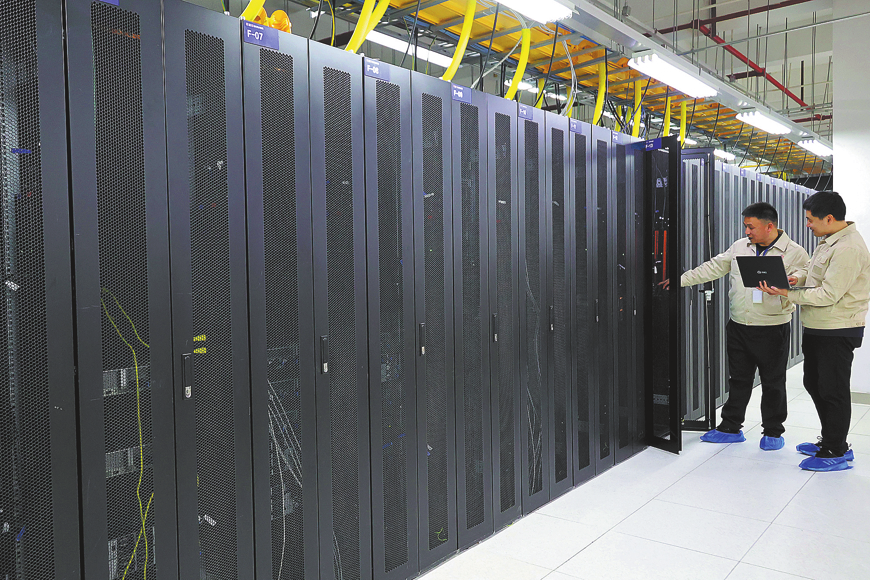Institute to build space data centers

An institute in Beijing is preparing to launch its first new type of high-computing-power experimental satellites by late 2025 or early 2026, as China seeks new ways to meet surging demand for computing power amid global energy constraints driven by artificial intelligence, experts said on Thursday.
"Large-scale data centers have expanded rapidly worldwide, but further growth faces major obstacles, including heavy land use, soaring energy consumption and limits on atmospheric cooling," said Zhang Shancong, director of the Beijing Astro-future Institute of Space Technology and chief scientist at Beijing Orbit Twilight Technology Co.
A report released by the International Energy Agency in April warned that global electricity demand from data centers is expected to more than double by 2030 to around 945 terawatt-hours, exceeding Japan's current total electricity consumption. AI is expected to be the biggest contributor to the increase.
Space-based solutions offer abundant solar energy and the stable minus 270 C cosmic environment, enabling continuous solar power generation and highly efficient passive radiation cooling — a potentially groundbreaking approach to meeting future computational needs, according to the Beijing institute.
The institute plans to build a constellation of 16 centralized space data centers in a dawn-dusk orbit 700 to 800 kilometers above Earth. The orbit would allow near-continuous access to solar power, supplying an estimated 16 gigawatts to the network.
The design features concentrated solar cells and flexible radiating panels. The project has now entered its initial research phase, including the development of first-generation test satellites.
The push comes as technology companies globally race to build orbital computing infrastructure. On Nov 5, Alphabet, Google's parent company, unveiled its "Sun Catcher" project to build a space-based AI data center using solar-powered satellites equipped with Google TPUs, with trial launches planned for 2027. Starcloud, an Nvidia-backed company, launched its first test satellite carrying H100 chips on Nov 2 and aims to develop a space data center spanning tens of square kilometers with five-gigawatt-level power within five years.
Computing satellites will be used in many sectors, said Liu Liang, deputy director of the satellite-terrestrial integration technology research institute at China Mobile Research Institute. In-orbit AI models will be able to process and analyze monitoring data rapidly, allowing real-time observation of environmental elements such as the atmosphere, water and soil. Liu said this will provide critical data support for weather forecasting, environmental governance and agricultural production.
"With wide-area coverage and low-latency computing services, the computing constellation also contributes to building an intelligent transportation network," Liu said.
Zhang said development will unfold in three stages. From 2025 to 2027, the team will test key technologies needed to power and cool computers in orbit, and several trial computing satellites and data-relay satellites will be launched. Computing capacity is expected to grow as more satellites join the network.
The second stage, from 2028 to 2030, will focus on reducing the cost of space-based computing so it becomes comparable to running data centers on the ground.
The final stage, from 2031 to 2035, aims to build much larger orbital facilities powered by vast amounts of solar energy that could one day support the training and operation of advanced AI systems directly in space.
Beijing's rocket enterprises are expected to launch the majority of missions.
Today's Top News
- Xi calls for promoting volunteer spirit to serve national rejuvenation
- Xi chairs CPC meeting to review report on central discipline inspection
- Reunification will only make Taiwan better
- Outline of Xi's thought on strengthening military published
- Targeted action plan to unleash consumption momentum
- Separatist plans of Lai slammed






























